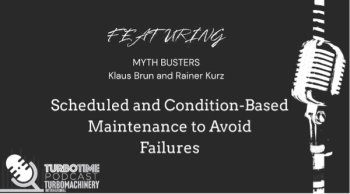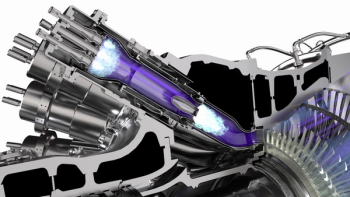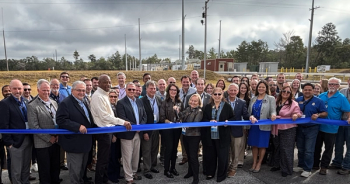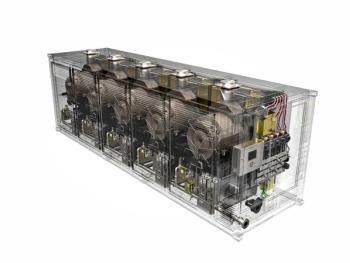
- September/October 2021
Turbine fuel control
Five reasons why you should upgrade your fuel system.
BY RICK FISHER
Gas turbine fuel control has become more important than ever. Whether due to emissions mandates, maintaining efficiency, plant profitability or increasing the lifespan of a facility, operators and owners are looking for ways to achieve a tighter rein on fuel usage. Here are the top five reasons why now is a good time to upgrade your fuel system.
AGING PARTS ARE UNRELIABLE
There are a great many gas turbines around that have been in operation for ten, twenty, thirty or more years. Machines that have been in heavy use are likely to have worn fuel valves, unreliable shutoffs, or systems that aren’t responsive enough to operator instructions. But even peaking turbines that have seen infrequent usage can suffer badly due to faulty fuel control systems or components.
As these units age further, components wear. This can lead to problems in starting up the machine as well as unscheduled outages and maintenance personnel continually having to babysit the fuel controls.
Additionally, there are many turbines out there with fuel control systems that are either poorly supported or have been made obsolete by the OEM. There comes a point when it becomes too much of a burden to continually scramble to find components or keep aging controls running.
LACK OF SPEED OF RESPONSE
In this day and age, speed is everything. Operators demand turbomachinery that is going to start up rapidly on demand, and shutdown instantly should problems arise. The fuel control system must match these expectations. This means valves that provide the precise fuel mix and fuel shutoffs that do the job in a timely manner.
Yet fuel controls don’t always measure up. In some cases, aging facilities have installed manual ball valves to keep their fuel control systems running. There is no place for such technology in a modern gas turbine plant. Even standard fuel control systems may not be good enough for current conditions. Response times of half a second to a second (and as much as two seconds for a slow motor) are commonplace. Such systems operate at risk.
Pneumatically actuated valves are required with response times of 200 milliseconds or less. Only then, can the operator have peace of mind that shutoffs will occur rapidly enough to avoid damage. Furthermore, pneumatic systems are available that only need 1 amp at 24 volts DC.
Fuel metering valves must also be able to function at the right pace. All-electric fuel control valves offer real-time flow control to dispense the right amount of fuel at the right time, as requested by the turbomachinery control system. This has everything to do with achieving performance objectives, while avoiding the possibility of falling out of emissions compliance.
SKILLS SHORTAGE
Not so long ago, plants operated with large teams of skilled operations and maintenance personnel. But the demand to do a lot more with far fewer personnel has drastically shifted the skills picture in facilities. Couple that with an aging workforce with a steady parade of retirements and there is no place for finicky or unreliable turbine systems.
Fuel controls, therefore, must not be the weak link. Instead of being composed of multiple components cobbled together over the years that require constant attention, they must be unified into one comprehensive, automated fuel metering, shutoff, and control system. Ideally, such pre-assembled systems would include electric actuation at low power to eliminate the need for additional high-powered electrical lines to be fed into them to operate motor-driven valves. It is even possible to operate the fuel control valves at the same pressure as the incoming gas.
Such systems ease the burden on less-experienced plant personnel by offering them an engineered solution that is tested, integrated, and can be dropped in place. Veteran staff may be able to purchase the various components and competently tie everything together – if they have the time. But the generation entering the workforce demands fit-and-forget, leak-free systems. They want to spend their time on the big picture – overall performance, plant economics and emissions compliance – not in the routine of adjusting valves, checking for leaks, and troubleshooting fuel control issues.
MEETING THE LATEST STANDARDS
Standards are continually evolving. Safety standards have altered markedly over the last twenty years. These days SIL 2 or 3 safety levels are the norm for new valves. Fast shutoff of fuel to the gas turbine is another aspect of safety. The flow of gas must cease immediately as dictated by plant control systems or whenever there is a loss of pilot pressure.
Older systems lack the safety capabilities of the latest fuel controls. The latest systems offer redundant pneumatic shutoff valves, and a block-and-bleed architecture to prevent leaks. In addition, they offer pilot valves: A spring-loaded piston is activated by system pressure to open the valve; when pressure is released, the valve closes at once. This safety feature is an important fail-safe mechanism. Those relying on all-electric systems, however, can experience shutdown delays in the event of a power cut.
There are plenty of other standards that apply. Those wishing to operate in Europe must meet ATEX requirements, which are steadily refined. In North America, valves, components, and systems are subject to ASME certification. Similarly, emissions regulations become ever more stringent. Gas turbine operators must maintain NOx and other emissions below regulated limits. More recently, gaseous methane compliance has been added to the compliance burden.
Older fuel controls are found lacking when it comes to some of these standards. They struggle to remain in compliance and lack the flexibility to deal with shifts from high BTU to low BTU fuel, or vice versa. However, systems are available with complete fuel control assemblies fully certified and tested to meet local requirements.
POOR ECONOMICS
Inefficient fuel systems exert a significant impact on plant performance and profitability. The ability to rapidly start, stop and adjust the various elements of fuel control translates directly into improved economics and an ability to meet market demands. Older systems lack the necessary degree of responsiveness.
Component or system unreliability opens the door to unexpected shutdowns. This can mean the difference between a profitable and unprofitable facility. Those investing in modern, end-to-end fuel controls gain more certainty of performance. With that comes lowered risk and more predictable economic outcomes.
GAS FUEL SHUTOFF AND CONTROL SYSTEM
The Gas Fuel Shutoff and Control System from Continental Controls is a complete fuel train inclusive of fuel metering, redundant pneumatic shutoff valves that meet safety and other industry standards, pilot valves, flow measurement, NOx feedback, fuel heating value measurement, and gas leakage elimination via a coaxial valve. This integrated system includes a controller with sensors for temperature, pressure, and other parameters. All components are preassembled, welded, tested, certified, and delivered on one manifold.
The design allows for precision flow, pressure, or position control measurement even with changing backpressure or other effects from the application that may cause other measurement techniques to be less accurate. Fuel flow measurement, for example, is available to the user for control, display, and logging purposes at ±2% reading accuracy or 0.5% of full scale, whichever is greatest. Fuel flow control is conducted by an electronic computer assembly. This computer receives the 4 to 20 mA fuel demand signal and compares it to the fuel flow signal from the built-in flowmeter. It then adjusts the throttling orifice to change the fuel flow as necessary to make the measured fuel flow equal to the fuel demand. Control is based on mass flow calculation, not just pressure or position.
It provides fire-safe and fast natural gas shutoff, is SIL 2 to 3 certified, and can close in less than 200 milliseconds. The system is pressure tested with valves that close bubble tight with loss of pilot pressure. This integrated solution is suitable for operators and repackagers looking to repair or replace an existing fuel system on gas turbines up to 50 MW.
Articles in this issue
about 4 years ago
Compressor chokeabout 4 years ago
Resolving varnish challengesabout 4 years ago
Methane emissionsabout 4 years ago
Q&A: The need for oil-free compressionabout 4 years ago
Vendor spotlight: FS Elliottover 4 years ago
The economics of hydrogenover 4 years ago
Carbon captureover 4 years ago
Myth: New turbomachinery is always better than older machinesover 4 years ago
Turbo tips: High-pressure turbocompressorsover 4 years ago
Western Turbine Users part IINewsletter
Power your knowledge with the latest in turbine technology, engineering advances, and energy solutions—subscribe to Turbomachinery International today.




